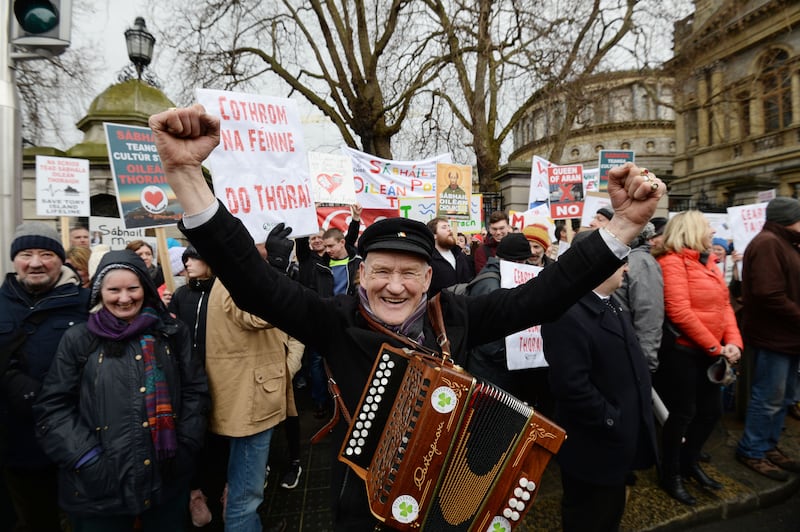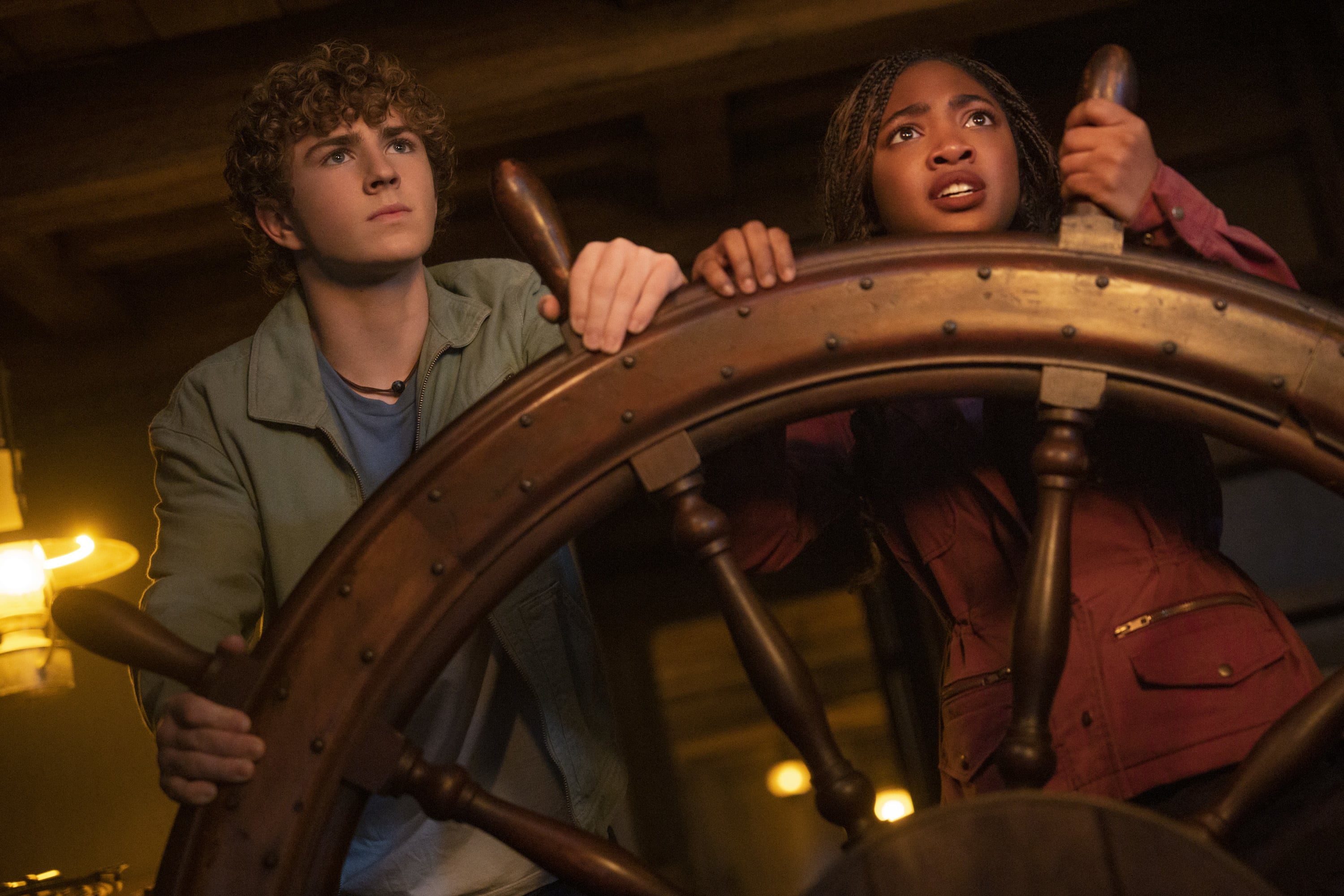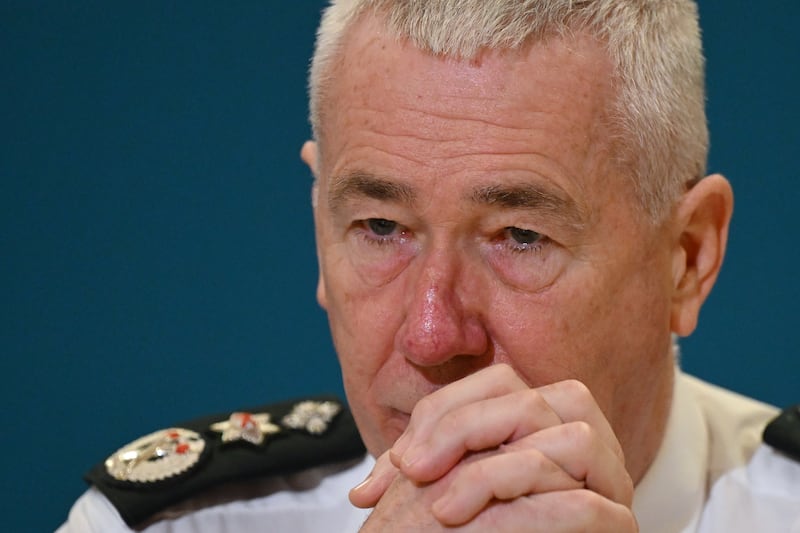With a population of 141, Tory Island does not have much in common with another kingdom off western Europe, 70-million strong. But there is at least one thing.
Back in 2018, soon after Britain split over Brexit, the people of Tory had a similarly divisive vote. In a way, that too involved a proud island community struggling with the compromises of a modern, interdependent world. But on the surface, at least, it was all about the ferry service.
The outcome had echoes of an even more bitter dispute from history. In the part of the ballot confined to Tory (there was a separate one for certain eligible mainlanders), the vote was 67-53: redolent of the 64-57 Dáil division that passed the 1921 Treaty and presaged Civil War.
There has been no violence on Tory, happily, and no suggestion that the disagreement set brother against brother. There were, however, reports of people in tears and being “extremely agitated” the day of the vote.
READ MORE
The Tory monarchy is an institution as much prized by outsiders as by islanders. The days when it had actual powers, apportioning parcels of land and sea-front to the various families, are long gone
And nobody denies that the island remains split five years on. Some people are still not talking to each other. Some also refuse to use the main ferry, the Queen of Aran, whose introduction the vote approved.
None of which was visible to most of the tourists who, like me, took that boat to Tory last weekend. Even the sea journey was pleasant. We left rain behind us on mainland Donegal and the notorious currents of the nine-mile (14.5km) crossing were at their most benign. The island basked prettily in sunshine. The locals, without exception, were warm and welcoming.
The only obvious split you notice when arriving is between the two villages: West Town (Baile Thiar), where the boats come in, and the smaller East Town (Baile Thoir), a mile away to your right.
Cheese wedge
The island is 5km long, narrow, and shaped like a cheese wedge, its steep rocky back hunched against the North Atlantic and protecting the gentler slopes where people have lived, fished, and farmed for centuries.
Those all face south, so that approaching by ferry, you see the entire habitable island.
Time was, when arriving on Tory, you would also have been met by the king, Patsy Dan Rodgers (1944-2018). The continuing interregnum may or may not be part of the ferry dispute’s backwash.

But the Tory monarchy is an institution as much prized by outsiders as by islanders. The days when it had actual powers, apportioning parcels of land and seafront to the various families, are long gone.
The modern king is essentially a PR man. And for someone with a big enough personality – Patsy Dan’s was outsized – the role can be self-selecting.
“Nobody here loses sleep over who the next king might be,” says film producer Anne Marie Nic Ruaidhrí, who also runs an Airbnb beside the pier. If an Irish Times journalist fancied the job, she jokes, locals might happily “leave you to it”.
In the absence of Patsy Dan, I was met soon after landing by his close friend Anton Meenan, a man who could be king although whether he would want to be is another matter.
A member of Tory’s famous art school and these days also a committed conservationist (proud of the several corncrakes in his meadow), Meenan is an affable, learned and, it seems, universally popular member of the community, who could help heal divisions.
Too modest
But he might be too modest for the role. One of the first things he did while leading a group of tourists around West Town was apologise (unnecessarily) for his English. His native language is Tory Irish, he explained; it remains a struggle to think and talk in anything else.
Even so, he gave an enlightening introduction to the island’s historical treasures, including the Tao Cross, St Colmcille’s 6th century Round Tower, and the ruins of a church where the clay has power to banish rats – a species of which Tory is free.
Ancient as Columcille’s tower is, the island’s name may derive from an even older one, or from the rocky tors that form the island’s skyline. An alternative etymology, popular on mainland Donegal, is from toraí, meaning “outlaw, pirate”, a profession once said to proliferate there.
That term also found its way into British politics, as a nickname for the Conservative Party, thanks to a historic exchange of insults with the rival Whigs (so called after a group of Scottish cattle dealers).
Among the many ways Tory differs from the rest of Ireland is that it was untouched by the Famine. Thanks to fishing and (it seems) an absence of blight, the population rose to a high of 402 in 1851
But whatever about pirates, Tory undoubtedly benefited down the centuries from the many shipwrecks whose cargoes washed ashore. A legacy of that era is the bilingual names given to rocks where ships perished: eg Fadán an Wasp, Slodán Echo, and Boilg an Fair Home.
Wrecks became less frequent after the island’s lighthouse was built. Poignantly, that now shares the island’s western end with the “Strangers’ cemetery”, where graves include a communal one for bodies recovered from the HMS Wasp (sunk in 1884).
Among the many ways Tory differs from the rest of Ireland is that it was untouched by the Famine. Thanks to fishing and (it seems) an absence of blight, the population rose to a high of 402 in 1851, before a long decline to emigration.
Stood their ground
For a time in the early 1980s, the island looked like going the same way as the Blaskets. After one particularly bad storm, Meenan recalls, “people got scared”. Unspoken government policy favoured evacuation.
Homes were offered on the mainland and there was pressure for everyone to move en masse. But some stood their ground and only a quarter of families eventually left, some later returning.
But then or now, there is not much work on Tory. As long ago as the 1960s, English anthropologist Robin Fox noted that the once fiercely independent and resourceful islanders had come to rely on “subsidies”.
Conversely, former lighthouse keeper Seán Doherty, who first arrived there in 1967, remembers a lot of self-sufficiency even then. “Everyone had a cow or kept hens and grew vegetables,” he told me. “Now,” he added, pointing over his shoulder at the pier, “everything comes in on that ferry.”
Social and commercial life on modern Tory revolves between the hotel (which Doherty ran for several years) and “An Club”, where the dancefloor vibrates to Shoe the Donkey and other Donegal classics until 4am and later.
There is also the James Dixon Gallery, main outlet for the extraordinary local painting tradition begun by Englishman Derek Hill. Where the Blaskets had a late flowering in literature, Tory islanders turned to art. Unlike the Blasketeers, they’re still at it.
The gallery also houses a fine collection of local knitwork. That apart, however, Tory has a marked lack of places where tourists might buy crafts or souvenirs. Even allowing for the seasonality of the trade, it could also do with a coffee shop or two.
A worrying statistic is that there is now only one child attending the local secondary school. This is not as bleak as it sounds, however, because there are 21 at primary. The older student’s isolation is a demographic blip.
Work remotely
Maybe the older student and the younger ones will benefit in time from improved broadband. At least some might then join the handful of islanders who work remotely.
In the meantime, they and the rest of the island need to worry about climate change, as Saskia Lévy Rodgers – a French artist and teacher now raising a family on Tory, does.
While others argue about the current ferry service, she wonders if ferries in general will be viable in future years.
The sea around Tory is getting “angrier” and less predictable, she says. A protective wall built in 2002 is no longer high enough. Older people have noted changing wave patterns, Saskia says: “Some days, the sea looks calm, but there’s still a roll, a lot of movement beneath the surface.”
The waves buffeted us left and right, drawing excited yelps from child passengers and nervous smiles from adults
That might be a metaphor for the ferry row too. When the Queen of Aran was first proposed, its age (at 46, more than twice as old as the boat it was replacing) united islanders against it.
Then it was reframed as part of a package that would also include a smaller, fast ferry, now running morning and evening, and an expansion of the helicopter service. That was enough to persuade most people to accept.
[ Tory islanders call for unity after row over vote on ferry disputeOpens in new window ]
[ A walk for the weekend: circuit of Tory IslandOpens in new window ]
Yes voters say the deal was a no-brainer. The island’s governing board, the Co-op, thinks “confusion” added to the size of the No vote. But speaking to some of those opposed, I sensed strong cross-currents at play. Feelings remain bitter, although nobody wanted to speak on the record.
Heading back “over to Ireland” (as islanders traditionally phrase it) on Sunday, I again caught the regular boat and this time experienced some of the infamous rolls.
It was still sunny, with only a mild breeze. But the waves buffeted us left and right, drawing excited yelps from child passengers and nervous smiles from adults. Relieved to climb on to the pier in Magheraroarty afterwards, one landlubber joked to another: “You wouldn’t want to see it in a storm.”



















